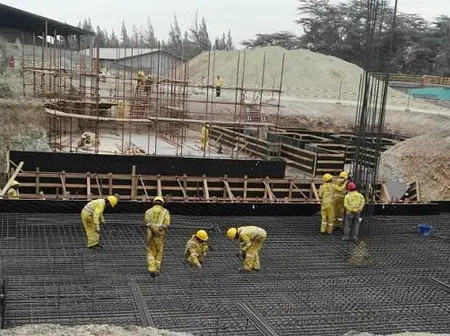Kenya’s construction industry is riding on cheaper credit and stronger developer financing, with fresh data showing a sharp rebound in building activity and surging demand in the property market.
“Cement consumption increased by 23.9 per cent to stand at 2,424.4 thousand metric tonnes from 1,957.1 thousand metric tonnes in the corresponding period of 2024,” KNBS says in its Quarterly GDP Report.
“Credit extended to enterprises in the construction sector grew by 21.7 per cent to stand at KSh 159.6 billion as at June 2025, compared to KSh 131.1 billion in the same period of 2024,” KNBS added.
The credit rebound came against a backdrop of looser monetary policy. The Central Bank of Kenya cut its base lending rate from 13.00% in June 2024 to 9.75% in June 2025, then to 9.50% in August, the lowest level since 2023.
Average commercial bank lending rates fell to 15.29% in June 2025 from 16.85% a year earlier, while the interbank rate dropped to 9.72% from 13.14%.
Analysts say the lower cost of capital has improved liquidity for developers, supporting both ongoing infrastructure projects and new private housing investments.
According to HassConsult’s Q2 2025 Property Price Indices, Nairobi property sales prices rose 3.75% in the three months to June, up from 2.45% in the first quarter. On an annual basis, prices increased 7.8%, nearly double the 4.9% recorded in the 12 months to March.
Detached homes drove the surge, rising 5% in the quarter, the fastest quarterly gain in nine years.
“Detached house prices grew at their fastest quarterly pace in nine years, which also reflected in suburbs such as Muthaiga, Karen and Runda—that are largely exclusive of apartments, reporting faster property price growth,” says Sakina Hassanali, Co-CEO & Creative Director at HassConsult. “There is a general lack of supply of detached houses leading to the increased prices.”
While sales surged, rentals weakened in the second quarter of 2025. Overall rents contracted 0.2% in Q2, dragged down by standalone houses whose rents fell 1.3%, while apartments rose 2.4%. “Landlords are therefore increasingly forced to forego an increase in rent prices in order to protect occupancy in a price sensitive market,” Hassanali noted.
Standalone houses remain far pricier, averaging KSh 224,557 per month, compared to KSh 104,794 for apartments. That gap has intensified tenants’ shift toward smaller, more affordable units.

Leave a Reply